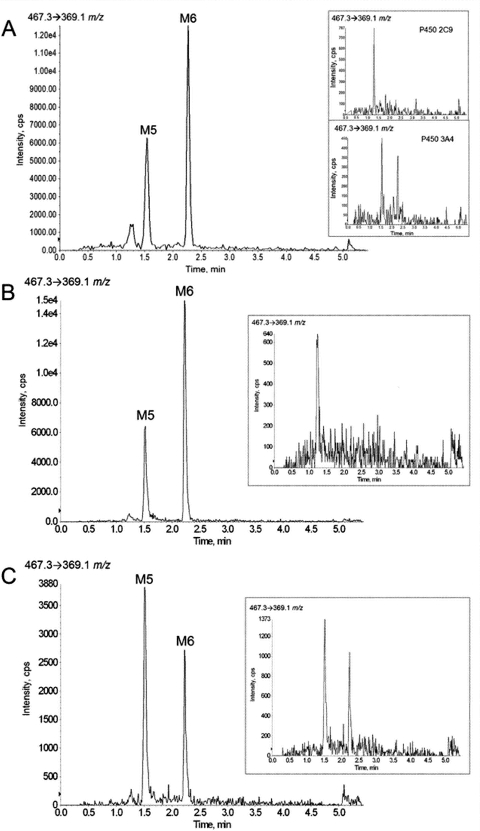Fig. 6.
Coincubations and sequential incubations of cDNA-expressed CYP3A4 and CYP2C9 result in the formation of M5 and M6. ETR (20 μM) was incubated with 5 pmol of cDNA-expressed CYP3A4 and CYP2C9 for 30 min at 37°C in the presence of an NADPH-regenerating system (A). Control experiments were conducted in which ETR was incubated with either CYP3A4 or CYP2C9 alone in the presence of an NADPH-regenerating system (A, insets). For sequential incubations, CYP3A4 (5 pmol) was incubated with ETR (20 μM) in the presence of NADPH for 60 min at 37°C; these reactions were then quenched, centrifuged, dried down, and reconstituted in 5 μl of DMSO. The DMSO reconstitute (1 μl) was subsequently added to a reaction containing CYP2C9 (5 pmol) and an NADPH-regenerating system, and formation of M5 and M6 was monitored using UPLC-MS in multiple reaction monitoring mode as described under Materials and Methods (B). The reverse experiment, in which the first reaction contained CYP2C9 and the second contained CYP3A4, was also performed (C). Control experiments, in which the first reaction was incubated in the absence of NADPH, were also performed (B and C, insets).

